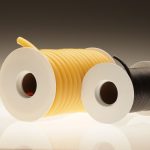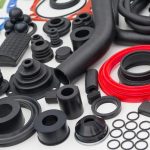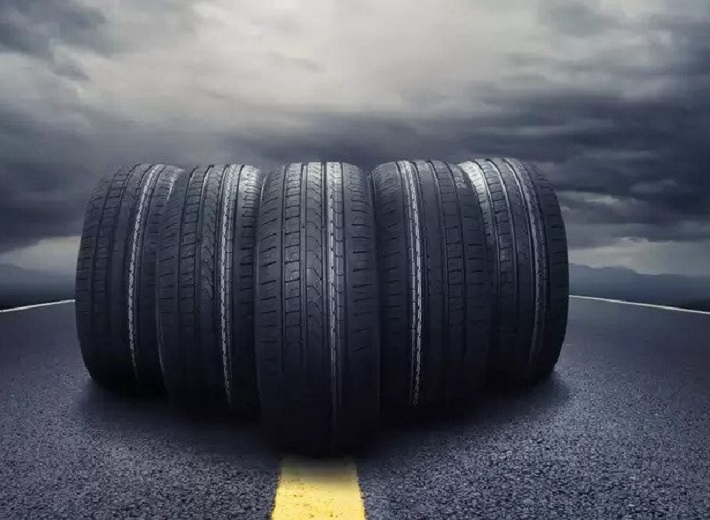
How Rubber Is Used In Tyre Manufacturing Process
In most cases, tyres are manufactured using natural rubber, but there are a few times when synthetic rubber is also utilised. The manufacturing process requires wrapping many layers of rubber that have been formulated explicitly around a drum made of metal. A tire forming machine is employed to manufacture them. The rubber that is applied is treated through a technique invented by Charles Goodyear.
Goodyear was an American inventor who found that the mixture of rubber and sulphur formed a very hard lump when heated. Called curing, the process strengthens rubbers, and Charles discovered it in 1839 by accidentally dropping India rubber and sulphur on a heated stove. What happened next changed the history of the world. Instead of melting in the heat, the rubber vulcanised.
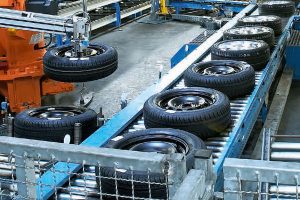 It is through the process of vulcanisation that factories, such as those Hyundai has, are able to produce millions upon millions of tires every year. The procedure of tyre rubber manufacturing takes place in four steps:
It is through the process of vulcanisation that factories, such as those Hyundai has, are able to produce millions upon millions of tires every year. The procedure of tyre rubber manufacturing takes place in four steps:
- Raw materials are mixed to create the rubber compound. These include:
- natural and synthetic rubber
- carbon black
- sulphur
- chemicals and oils
They are combined in massive machines that look like vertical cement mixers.
- The mixture is softened to add more chemicals by re-milling it, which requires additional heat.
- The whole batch is mixed again to produce the final mix.
- The final blend is squeezed into thick sheets using rolling mills. These sheets are then utilised to make particular parts of a tire.
It has to be noted that for each part of the tyre, a different composition of rubber is required. Therefore, each batch is made separately, i.e., the body is made through one process while the treads are made with another.
Answering The Question: Do Rubber Tyres Make Us Safe?
Everyone is aware of the phrase when it storms the safest place is a car. The logic behind it is that the rubber on the wheels of a vehicle acts like an insulator. Therefore, if lightning hits the vehicle during a tornado or thunderstorm, it will conduct the electricity away from you instead of to you. The belief has been deeply ingrained that the rubber tyres will keep you protected and safe while the world outside is being destroyed by the force of nature.
The idea is not dissimilar to wearing rubber slippers while handling anything electrical or rubber-soled shoes while 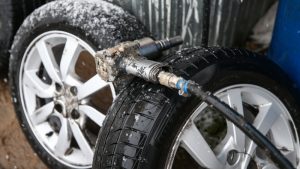 walking during storms. But is this belief an accurate one? Do rubber tyres actually protect us? The short answer is no. The longer explanation is that the rubber on the tyres, just like those on shoes and slippers, is too thin to act as an electrical insulator when lightning hits, you.
walking during storms. But is this belief an accurate one? Do rubber tyres actually protect us? The short answer is no. The longer explanation is that the rubber on the tyres, just like those on shoes and slippers, is too thin to act as an electrical insulator when lightning hits, you.
That said, staying inside the car does keep you relatively safe. The reasons for it are a little different. The metal frame of the car acts like a lightning rod and conducts electricity away from you and down to the car. This happens because electricity always follows the path of least resistance, which keeps you safe and sound.
What Can Work In Case Of A Storm, If Not Rubber Tyres?
It is apparent that rubber tyres are not the safety shield people thought they were. But can the metal frame of a car indeed protect those inside it? Yes, but only if the entire structure is made of metal. If there is fibreglass or any other material, it will not work. This happens because other elements are not insulators and they can carry the electricity to you instead of away. Check Here about some facts of rubber tires insulate your car from lightning.
Additionally, all vehicles are full of things made of metal that a person sitting inside can touch accidentally like the door handle and dials. All these again conduct the lightning to you. Therefore, the only way to be safe in a car during a storm is to park it on the side, switch it off and keep hands and legs to yourself!
This article was conceived by Susee Hyundai as a case study to answer a commonly asked question.

